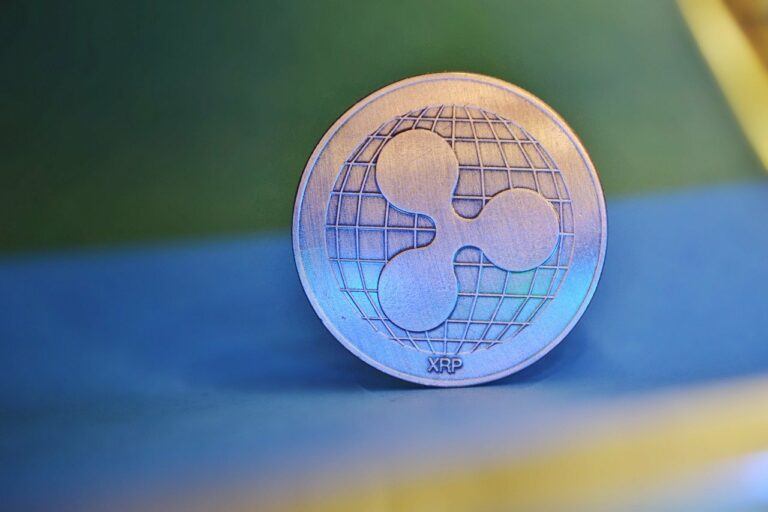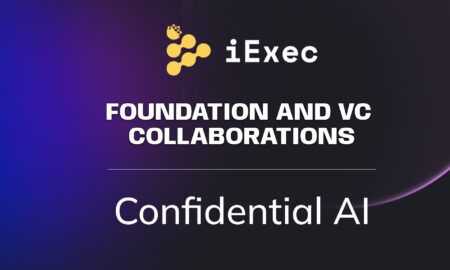Recently, Grayscale Investments (“Grayscale”), which is one of the world’s largest digital currency asset managers, made some questionable claims about XRP.
As Stefan Huber pointed out yesterday (August 21), in an Information Statement for Grayscale Stellar Lumens Trust (XLM) that the firm filed with the U.S. Securities and Exchange Commission (SEC) last Tuesday (August 16), here is how Grayscale compard $XLM to $XRP (in a section titled “OVERVIEW OF STELLAR LUMENS”):
“Similar to XLM, XRP is a digital asset that is used to facilitate cross-currency payments quickly and efficiently. However, XRP’s only function is to facilitate cross-currency transactions. Unlike the Stellar Network, the Ripple network does not facilitate the creation of tokenized assets or offer a decentralized exchange platform.“
Huber also had this to say about Grayscale’s claims about XRP and “the Ripple network”:
The language used by Grayscale in the highlighted paragraph above seems poorly worded if not misleading. For example, what do they mean by “Ripple network”? If the answer is the open-source XRP Ledger (XRPL), then it would not be correct to say XRPL does not supporting the minting of non-fungible tokens (NFTs).
The XRP Ledger was created in 2012 by David Schwartz, Jed McCaleb, and Arthur Britto, and $XRP is the native currency of the XRP Ledger.
Back in February 2021, Wietse Wind, Founder of Ripple-backed XRPL Labs, came up with a proposal for implementing support for non-fungible tokens (NFTs) on the XRP Ledger (XRPL) that does not require changing the code for the XRPL. On 26 February 2021, Wind started a discussion for his proposed standard for working with NFTs on the XRP Ledger.
He gave some examples of use cases for NFTs:
“Non-fungible tokens are used to create verifiable digital scarcity, as well as digital ownership, and the possibility of asset interoperability across multiple platforms. NFTs are used in several specific applications that require unique digital items like crypto art, digital collectibles, and online gaming.“
In November 2021, XRPL co-architect and Ripple CTO David Schwartz was interviewed by blockchain analyst and Cointelegraph reporter Rachel Wolfson. Here are a few highlights of what Schwartz told Wolfson about the use of XRPL for NFTs:
“My talk at NFT NYC was mostly about carbon-neutral NFTs with the XRP Ledger and solving the energy consumption problem. Obviously, we aren’t going to solve climate change in the blockchain space, but the least we can do is not make it a lot worse. It’s not a technical problem — we know how to not consume that much energy, it’s just a matter of convincing people to adopt the technologies that are more climate-friendly…
“We were a little late to the party, but not too late. If NFTs are successful, then we are all still early. We initially started to look at how people wanted to use NFTs and realized that a lot of the challenges people were facing were due to the technology being very primitive...
“Part of Ethereum’s low transaction speed and cost is due to the fact that you can build more flexible technologies on the blockchain. Most people who build on the XRP Ledger are doing complex things, but for technical reasons they don’t need these to be right on the ledger…
“We don’t have those capabilities on the XRP Ledger today, but you can mint NFTs. The XRP Ledger also has a decentralized exchange (DEX), and you can issue new tokens. Payments are cheap and fast, so to some extent, it’s a fundamental engineering tradeoff.“
On 16 June 2022, British automotive company Lotus Cars, which manufactures sports cars and racing cars, announced plans to get into the NFT space. In its press release, Lotus said that for its first NFT collection it is working with NFT PRO and Ripple (which is “providing technical support” on the XRP Ledger).
Lotus’s press release also mentioned that “the partnership between Lotus and NFT PRO marks the car brand’s debut in the Web3 space by creating a community of – and exciting new opportunities for – Lotus customers, NFT collectors and crypto-fans.”
It went on to say that NFTs are “the next innovative project from Lotus Advanced Performance, the division of the business launched earlier this year.” Each NFT in the collection was “created in-house by Lotus Design” and will “pay tribute to the pioneering spirit of the iconic performance car brand.”
On 11 July 2022, Team Ripple published a blog post titled “CrossTower Partners with Ripple to Support NFTs Minted on the XRP Ledger”.
The blog post stated:
“CrossTower, one of the world’s leading trading platforms, is partnering with Ripple, the leader in enterprise blockchain and crypto solutions, to add NFTs (non-fungible tokens) minted on the XRP Ledger (XRPL), the ultra-fast, low-cost and carbon-neutral blockchain, to the CrossTower NFT marketplace. The marketplace enables developers to quickly onboard NFT projects by giving them access to out-of-the-box infrastructure including wallets, payments, liquidity support, and more, accelerating time-to-market for projects that previously took months to onboard. CrossTower’s NFT marketplace is built for developers and creators seeking a holistic service to take their projects from idea to fruition.
“For fans, the marketplace delivers an engaging user experience, connecting them with creators and brands. Fans will benefit from an optimized digital purchase experience with the ability to transact NFTs via credit card and receive the assets through integrated wallets on the XRP Ledger.“
The blog post went on to say that “having already broken ground in the NFT space, CrossTower is expanding their marketplace functionality to support XRPL which will significantly lower the costs and barrier to entry for creators who want to mint their projects on the blockchain best suited to enable settlement and liquidity of tokenized assets at scale.”
It also mentioned that “CrossTower has already attracted projects like Antara and David Bowie World on its marketplace and has a pipeline of inaugural projects on the XRPL that will engage a global audience to be announced in the upcoming weeks.”
On 12 July 2022, Ripple announced that it was “excited” to partner with Ducati Motor Holding, the motorcycle-manufacturing division of Italian company Ducati, and NFT PRO to “launch Web3 initiatives and bring Ducati NFTs to life using the XRP Ledger.”
Ducati, which is headquartered in Bologna, Italy, is “directly owned by Italian automotive manufacturer Lamborghini, whose German parent company is Audi, itself owned by the Volkswagen Group.”
Ducati’s press release, which called NFT PRO “the number one corporate white-label NFT solution for global brands”, stated that “upcoming Ducati projects will be deployed using Ripple, the leading blockchain partner providing technical support on the ultra-fast, low-cost, and carbon-neutral XRP Ledger (XRPL) blockchain.”
The press release went on to say that “with this partnership, the Bologna-based motorcycle manufacturer confirms the importance of the digital world for the experiences it offers its fans.” Within the next few months, “a series of WEB 3.0 activities will be developed through the creation of new digital aggregation spaces, NFT collections and opportunities to participate in the new activities typical of the WEB 3.0 universe, already relevant in the cryptocurrency community.”
Image Credit
Featured Image via Pixabay









